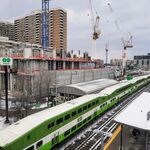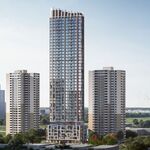There's places where master-planning works good enough, but there aren't many places where it has a direct hand in creating thriving neighbourhoods.
One can actually argue that typical suburbia, which is subdivided and built somewhat 'organically' by a slew of developers and builders, often fails because it is underplanned compared to a place like Don Mills. Almost invariably, neighbourhood units and other sorts of development models are carelessly applied to the suburbs when applied in large doses. Toronto was incredibly fortunate to have received the suburbs it did, with apartment clusters and plazas in walking distance and good bus service and compact houses and few gated communities and so on, and all of this viable out on the fringe even as the fringe creeps into cornfields. There's a few south/east American-style subdivisions with acre-sized lots and forests in between each house/street, but they tend to be wealthy 'executive home' ghettos like parts of Caledon and Aurora.
Of course, this does not disprove Jane Jacobs.
As for Eglinton...
For one thing, a significant chunk of the Richview land will be consumed by road widenings to accommodate the LRT, bike lanes, sidewalks, trees, Michigan Lefts, etc., and there won't be a heck of a lot of land left to develop, particularly where Eglinton runs in the middle of the corridor.
A trench can be covered or left open (and we wouldn't even want a trench fully covered). There won't be a solid block of towers built over it - even downtown Toronto is not entirely covered by towers. Parking lots and tennis courts and fountains and Tim Hortons will cover much of it. You can't develop over LRT running in the middle of the road, or the sidewalks or anything else.
Perhaps in some theoretical situations it would be preferable to have transit running under Eglinton, but we're talking about what's practical, not what's ideal. It'd be silly to run in the middle of Eglinton when a huge empty corridor sits a few metres away. A trench isn't the only option and people that bring up the 'continuum' of grade-separation are correct - trenches are a perfectly feasible and affordable and desirable option in some places, particularly if built so that the platforms are extremely close in elevation to the sidewalk.




